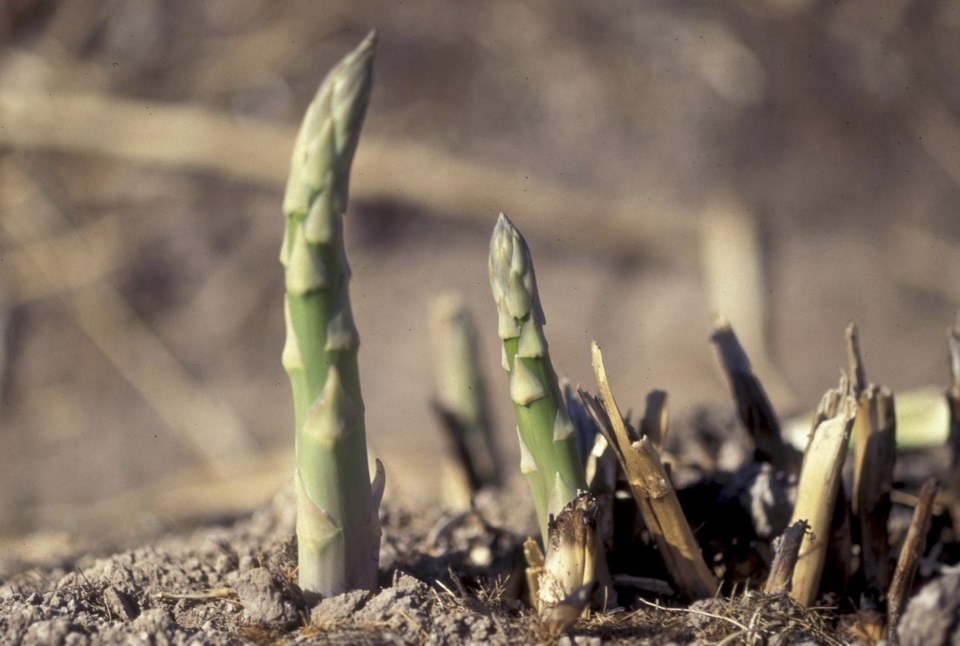Asparagus isn’t the most common vegetable among home gardeners, and that’s likely because growing it is an exercise in patience. But three years of patience is a small price to pay for up to 20 years of relatively effortless tender green shoots.
If you’ve never seen an asparagus plant, you might be taken aback by its otherworldly appearance. Instead of the expected leaves and stems typical of most other plants, bare asparagus spears simply poke up out of the ground like sticks.
If you’d like to grow them in your garden, there are a few things to know.
For starters, in horticultural zones 3-8, asparagus isn’t one of those vegetables you need to plant every year, so plant it where it can thrive long-term. That means selecting a sunny spot with well-draining, fertile soil. To achieve that fertility, incorporate a generous helping of compost or well-rotted manure into the soil before planting.
Although it’s possible to grow asparagus from seeds, I recommend planting year-old crowns, which are dormant roots, instead. You’ll find them at garden centers and in catalogs. Planting crowns provides a head start by reducing the time to your first harvest by a year.
Plant crowns into weed-free, prepared beds in early spring, digging trenches 12-18 inches wide, 6-12 inches deep and 3 feet apart (if planting more than one row). Plant crowns 12-18 inches apart, spreading the roots over the bottom of the trench, then cover lightly with 2-3 inches of soil, and water well.
As shoots grow, add more soil gradually until the crowns are fully buried and the trench is filled in. Then apply mulch.
Water plants deeply during dry spells but avoid overwatering.
Allow plants to grow undisturbed for two full years, then begin harvesting in spring of their third year, when stalks are 6 to 10 inches tall and about as thick as a pencil.
Use a sharp knife to cut each stalk slightly below the soil line, but take care not to damage emerging stalks. You can continue to harvest for roughly six weeks, depending on your climate. In my suburban New York garden, I can harvest asparagus until the beginning of July.
It’s important not to harvest after the six-week period that begins when the first stalks are mature. The remaining stalks should be left in place to store energy for the following year’s harvest.
At the end of the season, fernlike fronds will follow the spears. Leave them in place until they’ve turned brown, then remove them at ground level.
A note about companions: Onion and garlic will stunt asparagus, so avoid planting them nearby.
___
Jessica Damiano writes weekly gardening columns for the AP and publishes the award-winning Weekly Dirt Newsletter. You can sign up here for weekly gardening tips and advice.
___
For more AP gardening stories, go to https://apnews.com/hub/gardening.
Jessica Damiano, The Associated Press



